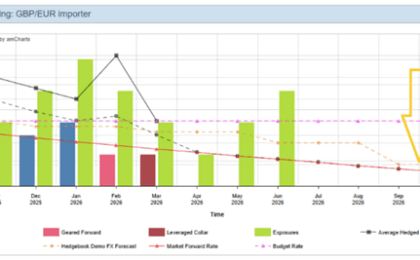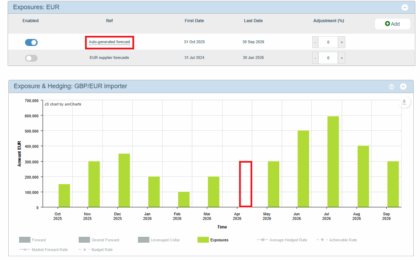In working with a number of wine companies over the years the Hedgebook team has discovered a new appreciation. Not just for the content of the bottle but for the inherent complexities of managing FX risk for wine importers and exporters.
Our insight also comes from Roger Kerr, a past Hedgebook director and recognised treasury management advisor. His involvement in assisting wine companies to manage FX risk, resulted in him authoring an article for the NZ Wine Growers Magazine in 2016.
When we recently caught up with Roger – over Zoom, as opposed to a glass of wine – it was interesting how the risks outlined in the article have continued to surface in recent times.
Increasing FX Risk for Wine Importers and Exporters
According to the article, proactively managing the exchange rate risk on wine export receipts should be equally as important as producing a quality product and getting the freight logistics, distribution and marketing as optimal as possible. As Roger puts it:
“It is always sad to see an exporter do all the right things with the hard- earned dollars invested into their product and export marketing, only to have their profits wiped out by the dollar appreciating. It does not have to happen like that!”
The issue, as Roger explains it, is that wine selling prices are fixed – often for years – and don’t move up and down with the exchange rate or season, unlike many other food and beverage exports.
“When you’re exporting into countries such as the UK and US your product needs to be priced competitively on the shelf and stay that way. So as the currency moves up and down so does your export profit margin – as opposed to the price on the bottle.”
Equally, when importing into these countries the issues are the same. Fluctuating currencies, if not protected, will impact on the importers profit margin, as well, when the currency goes against them.
Recent events, such as Brexit and Covid-19, have highlighted this. A year ago, the pound was at around 1.21 to the USD. Today it is at around 1.38. That is a seventeen cents difference – approximately a 15% movement in a year – which could not have been foreseen. Unless you hedged, this alone could wipe out your profit.
Can’t be managed on spreadsheets
Determining in advance what percentage and how far forward forecast export receipts are hedged (exchange rate fixed in advance) should not be managed on spreadsheets. Company profitability can be quickly eroded if the right currency protective mechanisms are not in place. Plus, there is considerable business risk if the formulas are corrupted or the spreadsheet architect leaves.
So what does Roger recommend?
“For a start you need to use a Treasury Management Solution that manages multiple currencies and records all hedging contracts and accurately reports their hedged and unhedged position. Establishing minimum and maximum hedging limits by time buckets removes the risk of exposing profitability to the ‘hope’ the exchange rate goes your way.”
This needs to be Board approved and based on independent analysis of the risks involved. The term and percentages hedged are typically determined by the ability of the exporter to change selling prices or not, and how long it may take to change selling prices (thus hedging protects profitability in the meantime).
In the 2016 article, Roger also raised the use of derivative instruments and why this should not scare company directors and managers off. He explains:
“FX options and collars are extremely efficient and legitimate methods of reducing risk to within the bounds the FX hedging policy requires. Establishing the appropriate rules of engagement for using these hedging products is an essential prerequisite, as is robust systems for recording, valuing, reporting and accounting for such legally binding contracts.
“The experience of successful currency hedgers is that using a combination and mix of forward contracts, purchased options and collar options has produced superior results over time.”
Four prerequisites for long term hedging
He still maintains there are four prerequisites for establishing long term wine currency hedging:
- Certainty of sales over three to five years, therefore reducing the risk of becoming ‘over-hedged’.
- A hedge accounting framework in place so large marked-to-market revaluation (gains or losses) on outstanding derivative contracts are not lodged in the P&L.
- Real understanding of the dealing limits available from banks and credit usage understood.
- Taxation treatment determined in advance.
Roger maintains that having all of this come together, with an effective TMS to then manage the various trades, puts FX hedging into the reach of most wine importers and exporters.
“One of the reasons I like Hedgebook is that it is an affordable solution for any wine importer and exporter yet provides the comprehensive FX management, independent valuations and derivative handling that you usually only get from high-end, enterprise TMS,” he says.
“But it doesn’t matter what solution you use in managing FX risk for wine importers and exporters; the bottom line remains. If you can’t change the selling price of your product at the shelf, you are more vulnerable than most to FX fluctuations. Just like early frosts and hurricanes, these are things completely outside of your control – unless you hedge.
“Then, at least you have a fighting chance of maintaining that all important profit margin the rest of your business depends on.”





